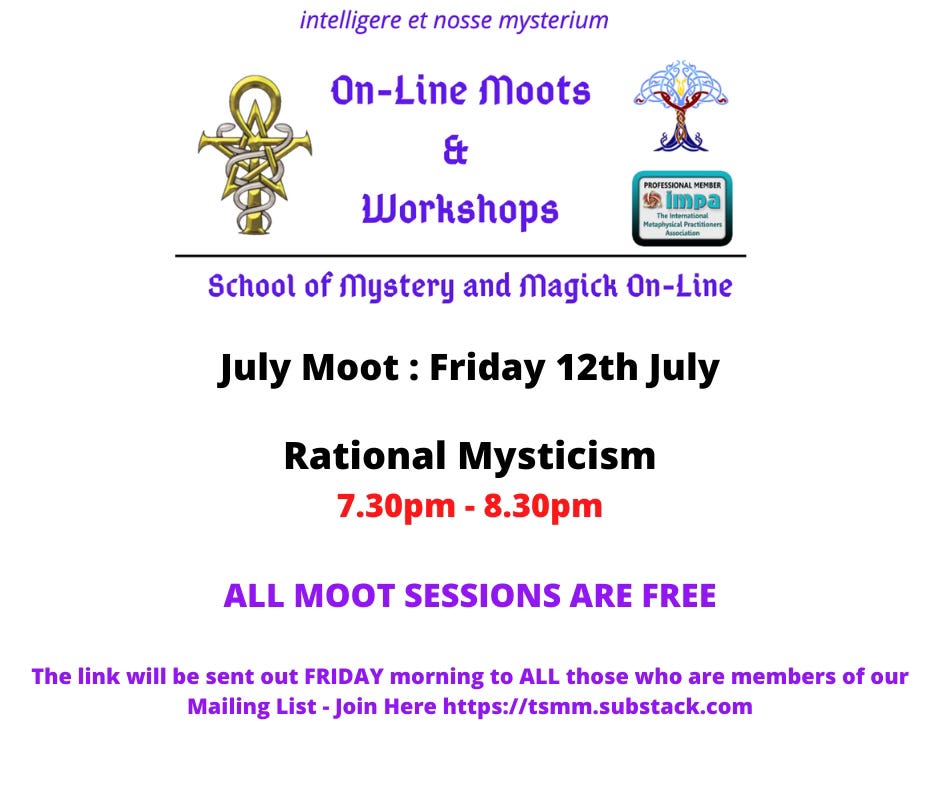Rational Mysticism
What is Rational Mysticism?
Rational mysticism is a philosophical approach that combines rational thinking with mystical experiences. It is a way of exploring and understanding the mysteries of existence through a logical and analytical lens, recognizing the limitations of reason and embracing the unknown.
At its core, rational mysticism acknowledges the importance of both reason and intuition in gaining insights into the nature of reality. It recognizes that there are aspects of existence that cannot be fully explained by logic alone and that sometimes a more intuitive, spiritual approach is needed to truly grasp the deeper meaning of life.
Rational mysticism is not about rejecting reason or science in favour of blind faith or superstition. Instead, it encourages individuals to engage in critical thinking, logical reasoning, and empirical inquiry while also being open to the possibility of transcendent experiences and insights that go beyond the realm of the purely rational.
One of the key principles of rational mysticism is the idea that there are different ways of knowing and understanding the world. While science and reason provide valuable tools for understanding the physical world, there are also subjective experiences and intuitive insights that can offer a deeper understanding of the mysteries of existence.
Some proponents of rational mysticism argue that the divide between science and spirituality is artificial and unnecessary and that a more holistic approach that embraces both reason and intuition is needed to understand the complexities of existence truly.
Rational mysticism is not tied to any specific religious tradition or belief system, but rather is a philosophical stance that can be adopted by individuals from a variety of backgrounds. It is a way of approaching life with curiosity, wonder, and a willingness to explore the unknown rationally and thoughtfully.
In a world where science and reason often dominate our understanding of reality, rational mysticism offers a refreshing perspective that encourages individuals to explore the mysteries of existence with an open mind and a sense of awe. It is a way of embracing both the rational and the mystical aspects of life, and finding a deeper connection to the world around us.
Origins of Rational Mysticism
The origins of rational mysticism can be traced back to ancient philosophical traditions that sought to reconcile the seemingly opposing forces of reason and intuition. Figures such as Plato, Plotinus, and William James all played a role in shaping the concept of rational mysticism, each in their way.
Plato, for example, believed that knowledge could be obtained through both reason and intuition and that true understanding required a balance between the two. Plotinus, a Neoplatonist philosopher, explored the idea of transcending the limitations of reason to achieve a direct experience of the divine.
In more modern times, William James, a pioneering psychologist and philosopher, wrote extensively on the topic of mystical experiences and their relation to rational thought. He argued that these experiences could offer valuable insights into the nature of reality and that they should be taken seriously by both scientists and philosophers.
Today, rational mysticism continues to be a topic of interest for those who seek to explore the deeper mysteries of existence in a thoughtful and intellectually rigorous way. It offers a unique perspective on the nature of reality, one that values both reason and intuition as valuable tools in the quest for understanding.
Rational Mysticism: Spirituality Meets Science in the Search for Enlightenment - 2004
John Horgan's book Rational Mystics dives into the realm of spirituality and its connection to science. He takes a closer look at the spiritual beliefs of some of the most well-known scientists and theologians of our time, including Richard Dawkins, Stephen Hawking, and Deepak Chopra.
He examines the similarities between the scientific and spiritual realms, and how these two seemingly disparate entities can coexist and even complement one another. He also makes an effort to bridge the gap between science and religion, highlighting how certain aspects of spirituality can be understood through scientific reasoning. In doing so, he challenges the notion that science and spirituality are mutually exclusive and demonstrates how having a strong spiritual belief can be beneficial to the scientific process. Ultimately, John Horgan's book Rational Mystics seeks to bring together science and the spiritual, highlighting how they are more intertwined than we often think.
In conclusion, John Horgan's insightful book Rational Mystics delves into the connection between science and spirituality and serves as a valuable resource for those interested in understanding the relationship between the two. Through his exploration of prominent scientists and theologians, he demonstrates how science and spirituality aren't necessarily mutually exclusive, but can in fact inform one another.
Horgan brings to light how spirituality can be beneficial to the scientific process, and ultimately, encourages readers to consider the intersections between science and spirituality for a more holistic view of life.
John Hotgans Key Points are
1. Science and spirituality can work in harmony and can even complement each other.
2. Certain aspects of spirituality can be understood through scientific reasoning.
3. There is potential benefit to having a strong spiritual belief in the scientific process.
4. Religion and science are not necessarily mutually exclusive.
5. Understanding the intersections between science and spirituality can give us a more holistic view on life.
Our Next Moot will explore what is meant by Rational Mysticism and focus on questions such as
How do we know what we know?
How do our beliefs affect the way we see the world?
Why Rational Mysticism is an important ‘middle’ ground.
The birth and death of dogma.
Invitations to the Zoom call will be sent out on the morning of 12th July.
See you on Friday.
Alan /|\
You can subscribe to receive recordings of past moots HERE
My new website can be found here





